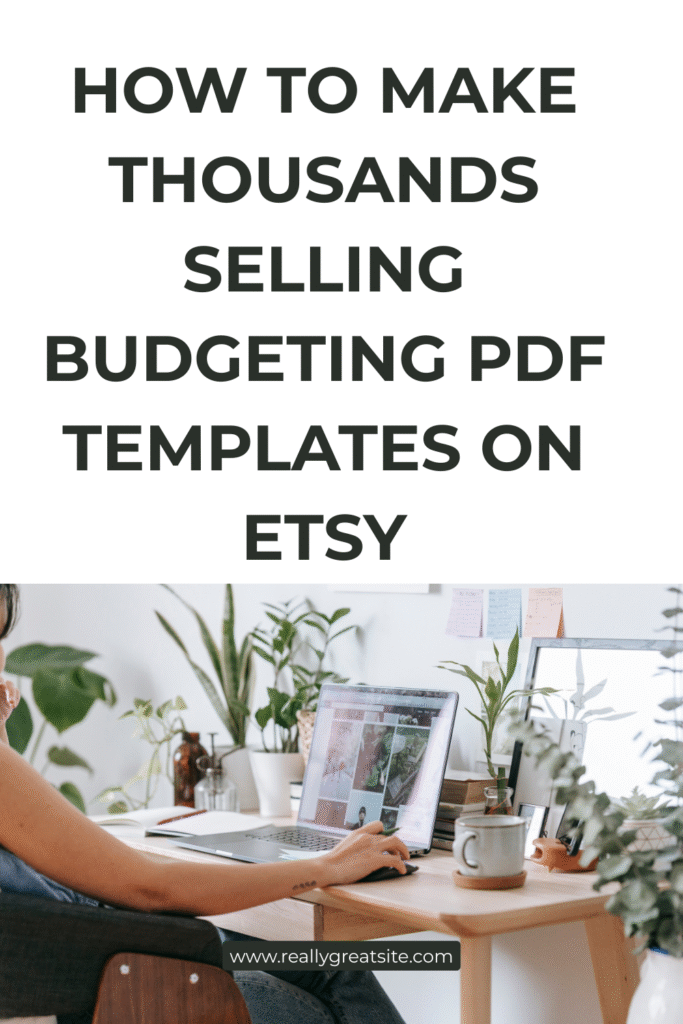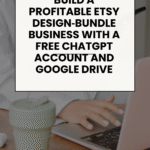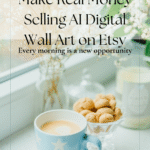A simple system to research, design, package, and sell budgeting planners as digital PDFs on Etsy—using AI for structure, Canva for design, and Placeit for mockups. Includes a bundling strategy to raise perceived value and AOV.
Introduction
There are Etsy shops earning seven figures selling nothing but digital templates. One top store crossed $1.6M in revenue, and a single budgeting planner in another shop generated over $16,000. The reason is simple: well‑designed PDFs that solve real problems are easy to purchase, easy to deliver, and easy for buyers to use. You don’t need to be an Excel wizard or an advanced designer. With AI to plan content, Canva to design, and a few best practices for packaging and listing, you can publish your first budgeting template this week.
Validate the Idea and Angle
“Budget planner” is broad. Narrow your promise and audience so your product feels built-for-them. Examples: a monthly zero‑based budget for freelancers with irregular income, a simple cash‑envelope system for families, or a starter budget for college students. Scan Etsy search results, read reviews on competing listings, and note what buyers praise or complain about. Your template should address those gaps: clearer categories, space for notes, a one‑page monthly summary, or printable and mobile‑friendly versions.
How to Sell Mugs on Etsy and Redbubble
Plan the Content with AI
Before you design, define the structure. Open ChatGPT and ask for the core sections, fields, and summaries your planner should include. This prevents missing something buyers expect.
Try this prompt:
I’m creating a monthly budgeting planner as a printable PDF. Outline the sections, fields, and summary views a beginner needs. Include: income categories, fixed and variable expenses, savings and sinking funds, debt tracker (snowball/avalanche), bill due dates, monthly overview, and a notes page. Keep it simple, uncluttered, and easy to print (US Letter and A4).
Use the outline to write short, plain-language labels. Keep the reading level low and the intent obvious so the template feels effortless from the first minute.
Design the Planner in Canva
Create two document sizes—US Letter (8.5×11 in) and A4—to serve global buyers. Choose a clean, legible type pairing, set generous margins, and keep layouts minimal so home printers don’t crop content. Add pages for monthly income, expenses (split fixed/variable), a savings and sinking funds tracker, debt payoff, a bill schedule, and a monthly summary. If your concept is “beginner‑friendly,” keep the number of categories small and provide a blank “custom” area for flexibility. If you want a premium feel, add light section dividers, subtle color accents with strong contrast, and a quick‑start page that explains how to fill each section.
Export High‑Quality Files
When you’re finished, export as PDF Print for crisp lines and text. Offer both color and ink‑friendly grayscale versions. Name files clearly so buyers know what they’re downloading, for example, Budget_Planner_US‑Letter_Color.pdf and Budget_Planner_A4_BW.pdf. If you want to offer a fillable version, add form fields in Adobe Acrobat and export a separate “fillable” PDF; label it accordingly.
Create Professional Mockups
Your first thumbnail sells the click. Use Placeit.net or Canva’s frames to showcase the planner on a desk scene and include a second image that tiles key pages (overview, expenses, savings, debt). A short 10–20 second listing video flipping through pages often improves conversions because it reduces uncertainty.
Write a Listing That Matches Buyer Search
Clarity beats cleverness. A strong title might read: Monthly Budget Planner Printable PDF (US Letter + A4) — Income, Expenses, Savings, Debt, Bill Tracker — Instant Download. In the description, spell out the page list, sizes included, printing tips, and what is not included (no physical product, no financial advice). Use tags that mirror how buyers search: budget planner, printable budget, monthly budget pdf, sinking funds, debt payoff, bill tracker, instant download.
Price for Perceived Value
Single planners commonly sit between $5 and $12 depending on presentation, page count, and whether you include both sizes or fillable versions. If you’ve added a clean monthly summary, ink‑friendly option, and a quick‑start guide, you can sit toward the higher end confidently.
Increase AOV with Smart Bundles
Bundling is the fastest way to lift perceived value without recreating the wheel. Package your budget planner with related tools like a habit tracker, savings challenge sheets, a meal‑planning page, or a debt snowball calculator. Keep visual styles consistent so the bundle feels like a system. Bundles commonly range from $15 to $29 depending on contents.
Deliver a Frictionless Experience
Include a one‑page “Start Here” that explains how to print, which file to open, and how to use the planner in three steps. Provide light troubleshooting (for example, “Print at 100% scale,” “Use grayscale version to save ink”). The smoother the first five minutes, the more reviews you’ll earn—and those reviews will compound your search visibility.
Licensing and Template Ethics
If you start from a Canva template or Creative Fabrica asset, customize heavily and ensure your license allows commercial use and template resale. Do not resell Canva designs “as is.” Replace imagery with license‑safe elements, adjust layout, rewrite copy, and build a cohesive system that is clearly your own work.
Optimize After Launch
Watch views, favorites, and conversion. If views are low, adjust your title keywords and first image. If views are healthy but sales lag, show more inside pages and clarify what’s included. Collect buyer questions and fold the answers into your description. Small, consistent improvements beat big overhauls.
A Simple Week‑One Plan
Day 1: Pick your angle and validate with Etsy search and reviews. Day 2: Outline with AI and draft copy labels. Day 3: Design US Letter and A4 versions in Canva. Day 4: Export PDFs (color + grayscale), add a quick‑start page. Day 5: Create mockups and a short video. Day 6: Publish on Etsy with clear title, tags, and description. Day 7: Plan a matching bundle to release next.
Conclusion
You don’t need advanced design skills to create a budgeting planner that buyers love. You need clarity, clean presentation, and a listing that answers every question at a glance. Use AI to structure the content, Canva to design a friendly layout, Placeit for mockups, and Etsy for high‑intent traffic. Launch a focused planner, bundle it thoughtfully, and let real buyer feedback guide your next iteration.


